By Lawrence Haywood, Mar 13, 2025
There’s a tendency among tourists to think that the food culture in Hoi An is somehow diminished when compared to other Vietnamese cities because of the huge levels of foreign visitors that come here. Because of Hoi An’s long and active history as a vital port town on the maritime Silk Road, several different cultures have sailed in and out of the town for centuries, gradually leaving marks in the cultural make-up of the city through adding houses, religious buildings, bridges and ultimately, delicious food.
You will find no shortage of things to eat in Hoi An as the town wears its culinary heart on its sleeves, with middle-aged chefs operating carts on the street, enticing you in with smiles and the attractive smells of their cooking. At even the most high-end restaurants, Hoi An’s food retains its humble roots and offers many chances to discover these around the town. At Incredible Asia Journeys, we’ve compiled this list of 8 things to eat in Hoi An.
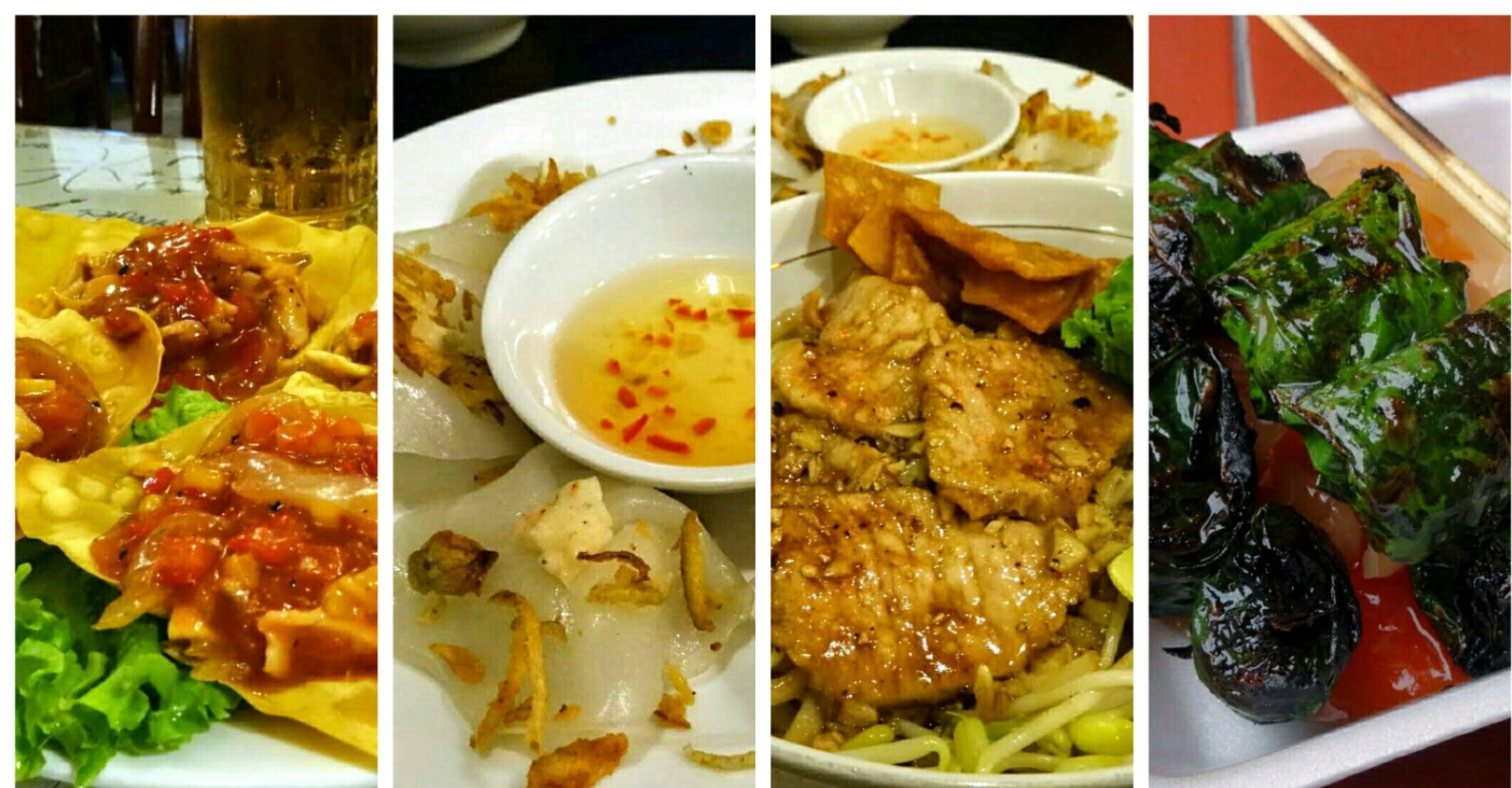
Famous Food in Hoi An
Legends abound about Cao Lau, its origins, and its practices that are entrenched in the streets of Hoi An. Claims to the original throne of Cao Lau come from China and Japan; the noodles feel very Japanese and the stir-fried pork gives a distinctly Chinese flavor, but as Hoi An was a melting pot of different cultures and their traders, it hardly surprising that this is reflected in a bowl of Cao Lau.
What is for sure is that Cao Lau is now unquestionably Vietnamese through the additions of herbs, bean sprouts, and flecks of rice cracker, and any visitor can see that it is now one of the most popular things to eat in Hoi An. The famous myth is that the water necessary to cook it needs to come from the Ba Le well within the town, but given that thousands of bowls of Cao Lau are made every day and there’s never a queue at the well, we’ll take this one with a pinch of salt; not that Cao Lau needs any.
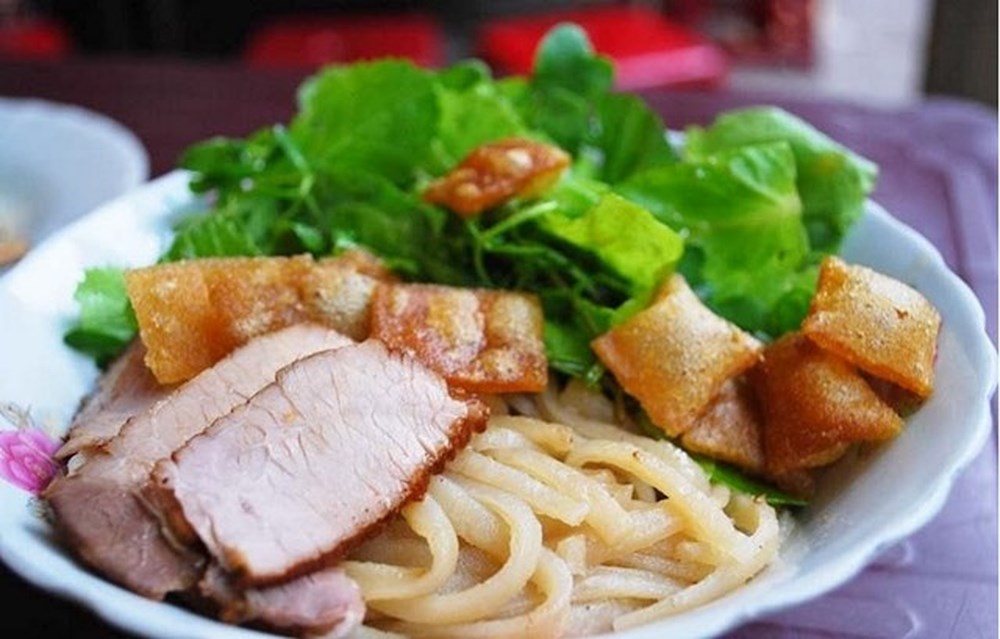
Cao Lau
Being Hoi An’s regional dish and one that is difficult to find outside of the town, it’s fair to say that you’ll never be stuck for options here. Most restaurants on the street will be able to accommodate your Cao Lau lust, but you can head to Cao Lau Khong Gian Xanh (687 Hai Bà Trưng) for assured quality at the street price.
Of the two most popular dishes to eat in Hoi An, you can immediately tell the difference between Cao Lau and Mi Quang with one quick sniff. It has more of a seafood aroma than cao lau as it makes use of Hoi An’s abundant waterways in its rivers, estuaries, and ocean.
Mi Quang is the culmination of years of fishing tradition, from a time when seafood dominated the port town’s culinary catalog. Ingredients from further afield have made this less of the case, but it’s done nothing to diminish the delectable taste of mi quang and its colorful makeup of pork, shrimp, shallots, noodles, banana blossoms, coriander and red chili in a pork broth.
Again, you’ll be blessed with a similar choice to that of Cao Lau when it comes to finding mi quang in Hoi An. Try Mi Quang Ong Hai – Mr. Hai Noodles (6A, Trương Minh Lượng) for a filling, delicious and local experience.
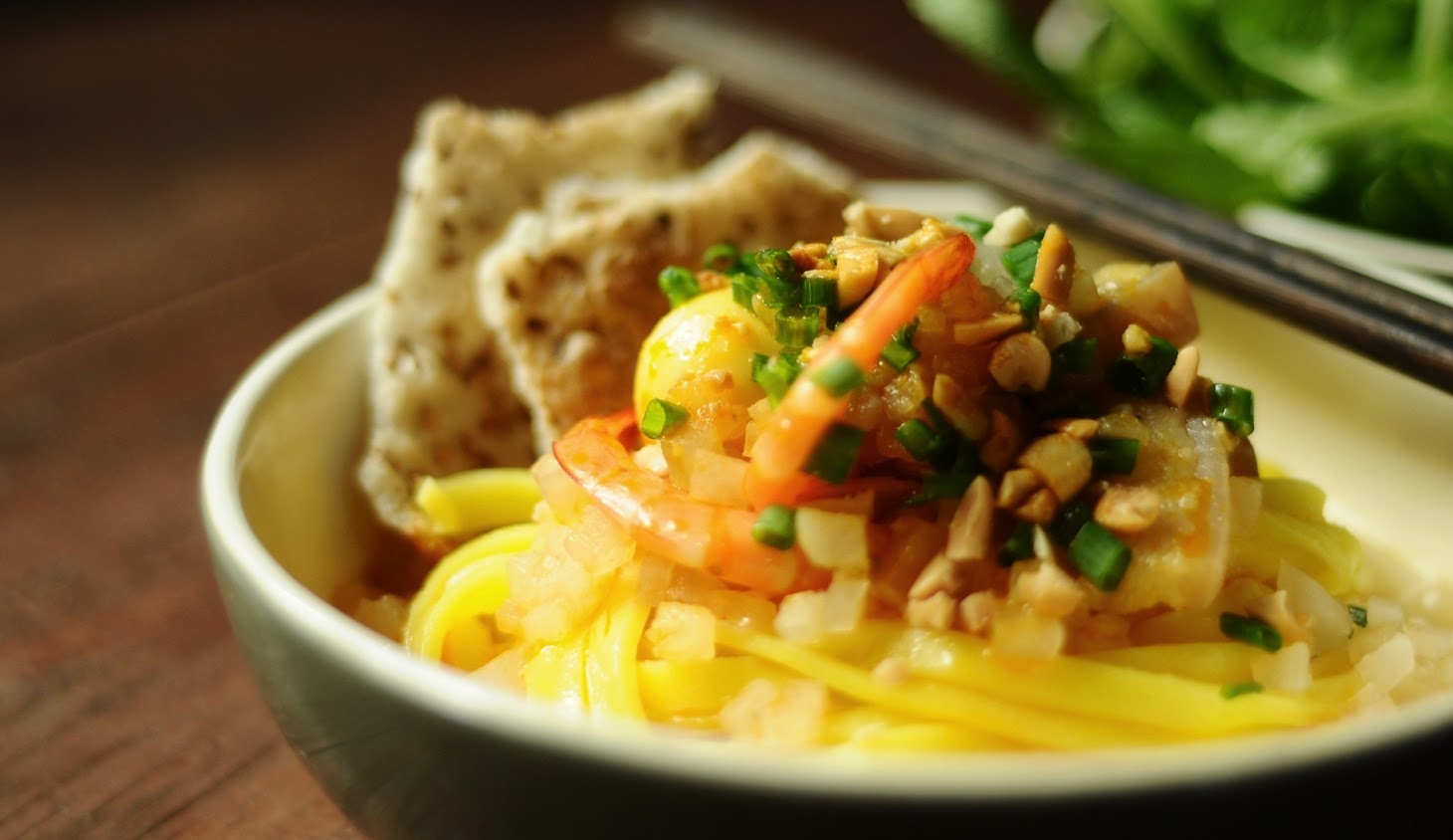
Mi Quang
If you are yet to try the literal basket of food that makes up bun dau mam tom, Hoi An is a good place to give it a go. The shallow circular tray is iconic of this dish, but you’ll be able to smell it long before you get a chance to see it. It takes a hardy Western nose to break through the pungency of the accompanying mam tom sauce, a paste made of crushed and fermented shrimp, but it’s one of the big lunchtime players of Vietnamese food nationwide and certainly worth a go for a local experience. It contains several cubes (yes, cubes) of noodles which are dipped in the sauce, along with cuts of assorted meat, tofu, and various leafy vegetables.
You should be able to smell the shrimp paste from a few streets over, but don’t let that put you off; try Quan Dau Bac – Bun Dau Mam Tom (38 Dao Duy Tu) and ask for soy sauce instead of mam tom if the scent proves too much.
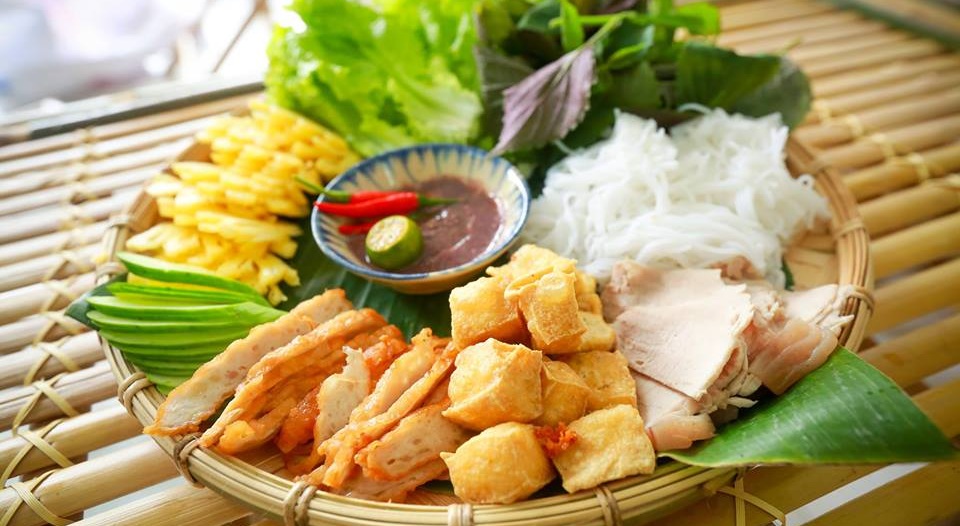
Bun Dau Mam Tom
It might be hard to imagine how the simplicity of chicken and rice repeatedly makes it onto lists of unmissable things to eat in Hoi An, but centuries of this cheap, hearty meal fueling the traders and crew have put it firmly on the culinary map of the town. Just as Hoi An’s simplicity is its charm, such is the case with com ga, a mixture of not much more than rice, shredded chicken, pickled vegetables and a dipping sauce. It is the spice of the latter that gives this dish a kick, and it makes it one of the spicier things to eat in Hoi An, a town usually noted for its milder spice levels due to the influx of westerners who struggle to handle the heat.
The basic nature of this dish has naturally given rise to many variations that you can find around town, and the best of these can be found at Long Com Ga – Long Chicken Rice (53/16 Phan Chau Trinh), which caters to the Western palette with less gristly cuts of chicken.
 Com Ga
Com Ga
Check out now Hoi An Cooking Class to learn how to make as well as savor Hoi An specialities
Another fine example of Hoi An using its fruitful waters to good effect, so diep, or grilled scallops in English, are among the most decadent things to eat in Hoi An, due to the melting effect that happens when they come into contact with your tongue. Topped with peanut oil, crushed peanuts, and spring onions, these scallops have an element of crunch to counteract the almost drinkable scallop meat.
Look out for the piles of scallop shells falling off of plastic tables, subject to the same treatment of discarding waste on the floor of restaurants that is standard practice in Vietnam. One slightly fancier eatery (by which we mean they have table covers) is Purple Lantern Restaurant, which still stays true to its Vietnamese roots by being pretty hard to find. It is located on one of the unnamed roads around An Bang Beach, so it’s best just to look at a map.
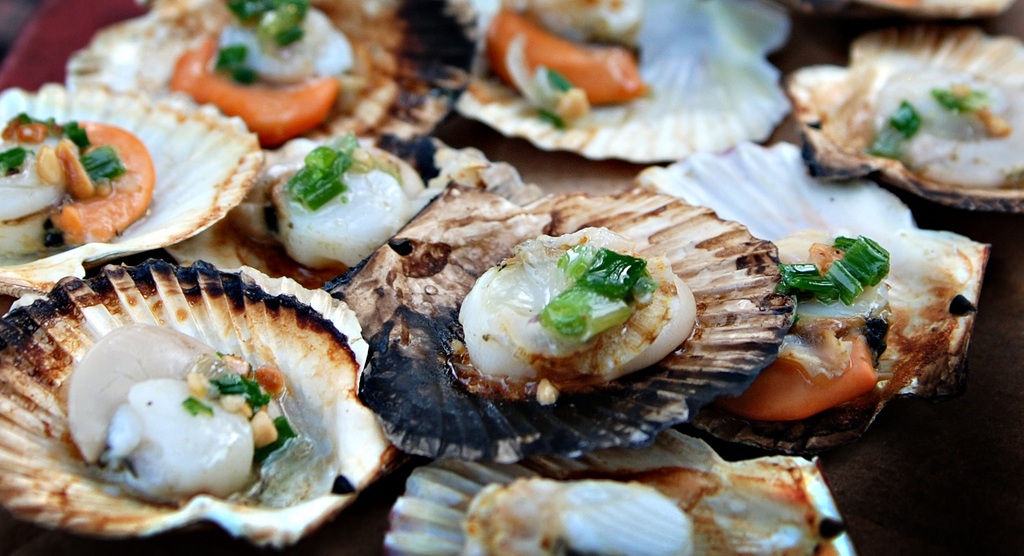
So Diep
More commonly known as ‘White Rose’, this is certainly one of Hoi An’s more Instagram-friendly things to eat. It’s quite easy to see why the French colonialists gave it such a name; white rice paper is cooked while a piece of shrimp lies in a parcel inside, meaning the edges of the paper bunch and rise up around the center to create the appearance of a flower. Toasted garlic is then grated on top and green coriander and red chili are added for color. 15 little dumplings appear to be the standard issue here, all of which require dipping in the accompanying chili sauce.
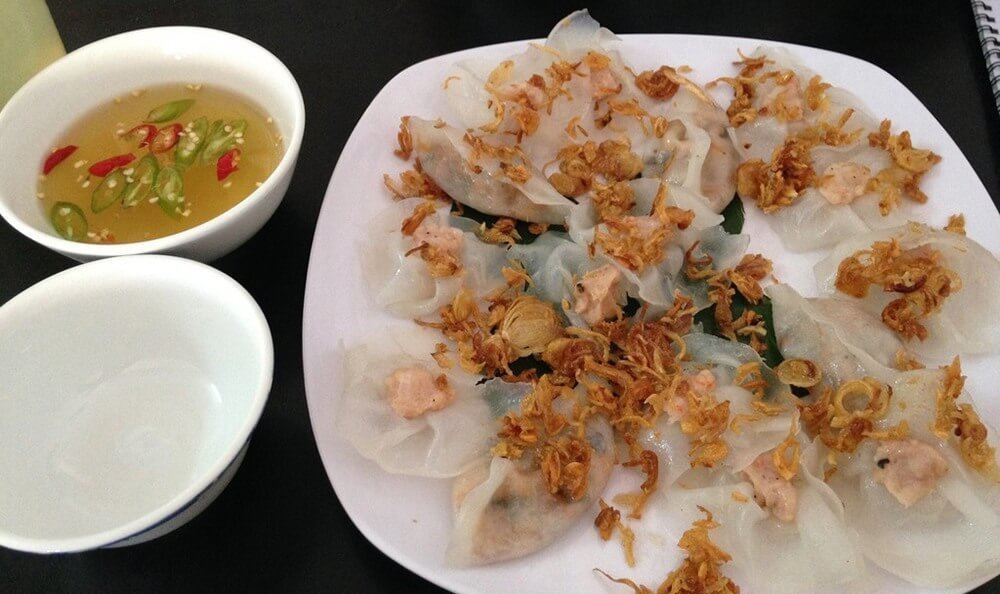
Banh Bao Banh Vac
It is common knowledge around Hoi An that, allegedly, one family makes the entire of the town’s supply of white rose and distributes them from their own kitchen and accompanying restaurant, White Rose Restaurant (533 Hai Ba Trung). Whether this is true or just a fantastic marketing ploy, us mortals will never know but check out the apparent home of white rose in Hoi An is worth a go, otherwise you can check out Ms Ly Café (22 Nguyen Hue) to determine if there’s any difference.
These fried wontons are one of the things to eat in Hoi An when looking for a more comprehensive dinner. Served as a pre-dinner snack, these small, crispy samosas are full of ground pork, shrimp, scallions, garlic, and vegetables that are dipped into a sweet and sour sauce, an obvious relic of Chinese visitors to Hoi An but now one adapted to the Vietnamese palette.
The shape of the wontons is really at the discretion of the chef, and you might find them served to you in triangles, rolls, parcels, or tiny teardrop shapes that resemble the water on your face after you finish your last bite.
The vast menu at Morning Glory Restaurant (106 Nguyen Thai Hoc) lists Hoanh Thanh Chien as a starter or a side, but no one will judge you for making a full meal of six or seven plates.
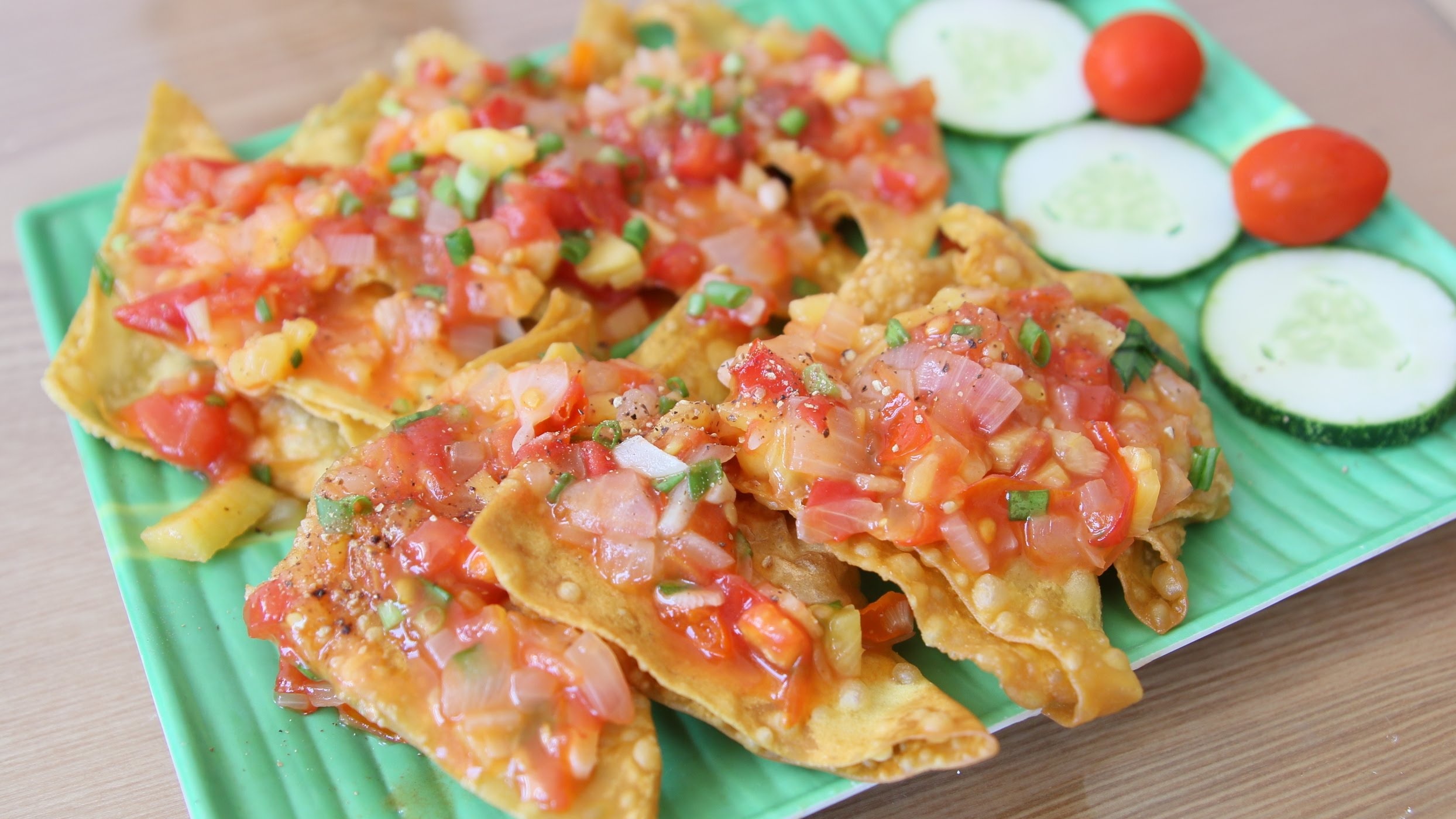
Hoanh Thanh Chien
The rural surrounds of Hoi An are homes to the farms, vegetable gardens, and fruit orchards that feed the town. One such place is Cam Nam island on the other side of the Thu Bon River, which specializes in rice crackers, another of Hoi An’s things to eat before mealtime. Banh dap are two layers of crispy and wet crackers that are joined together and require smashing on the table in order to bring them down to a size that you can fit in your mouth. At the base level, the smashed fragments of banh dap are just vessels for the accompanying anchovy sauce, but some other varieties, including hến xúc bánh tráng (clam crackers), and chè bắp (sweet corn crackers), provide more flavor in and of themselves.
Take the trip south across the Cam Nam Bridge to Cam Nam Island, the far south of which is where all of the Banh Dap eateries are. Try any of the shops here, such as Quán Bánh Đập Hến Trộn Cao Lầu Hội An (Nguyen Chi Phuong Street), which have been serving locals rather than tourists for a very long time.
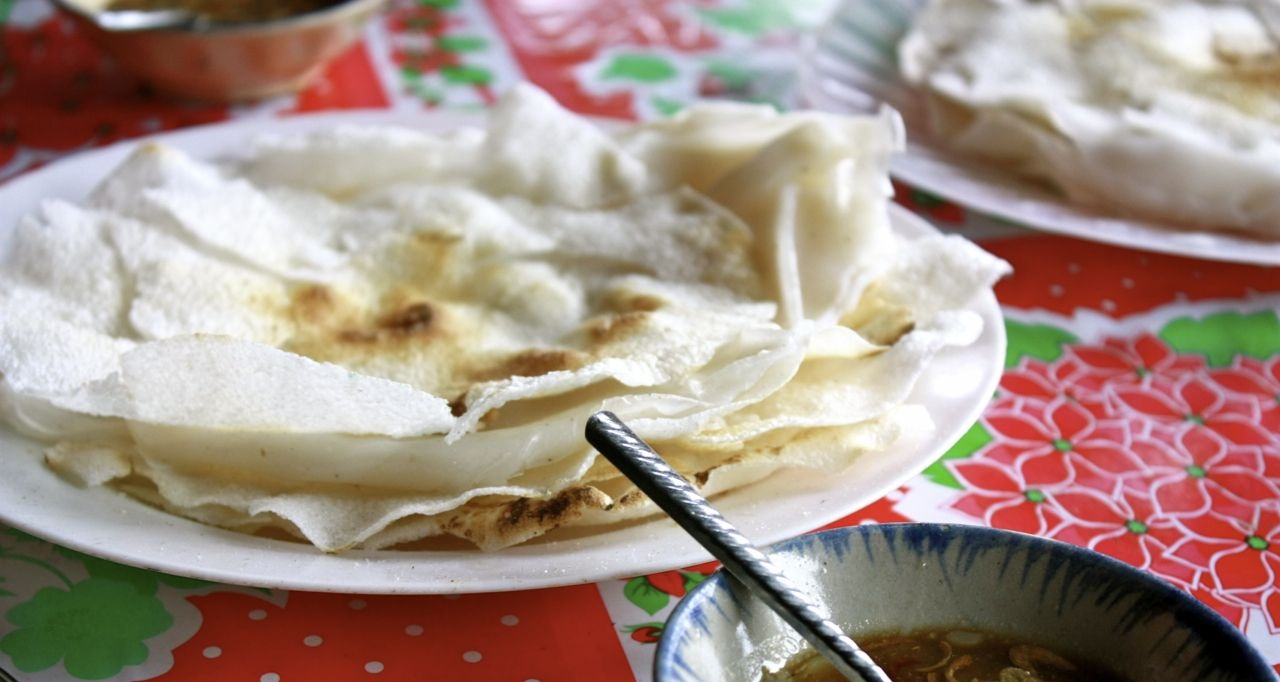
Banh Dap Hoi An
One of the most interesting things to do in Hoi An is to take a food tour to savor the diverse cuisine culture of Vietnamese, thus, contact us to plan your Hoi An trip today to experience this excitement!